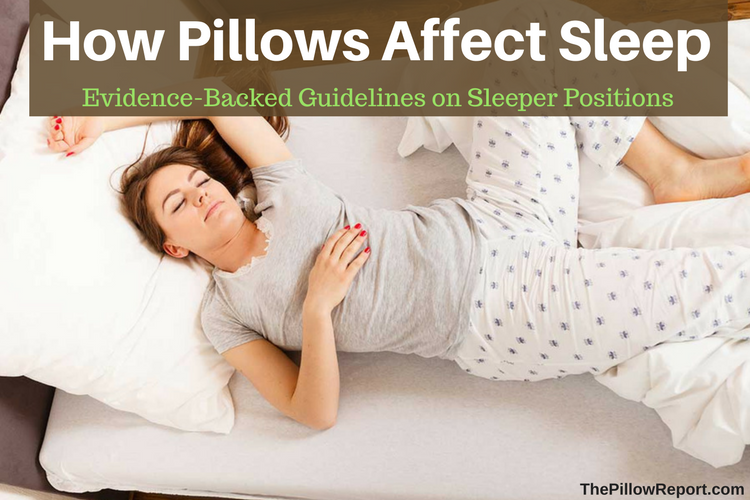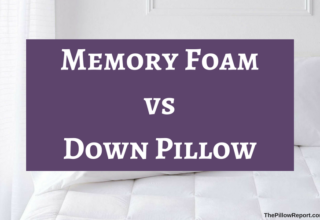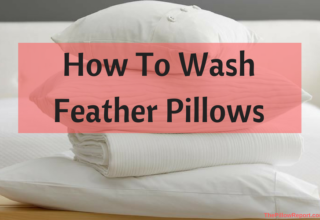Despite their smaller size relative to your mattress, pillows remain instrumental for you to take forty winks at a stretch. Improper selection will cause discomfort with other adverse ways on how pads affect sleep. Sleep disruption can cause lethargy and slackness, making you shattered throughout the day.

The unique types of pillows provide support as you bed down to conk off into the best nap experience. Positioning, size, firmness, and sleeper’s usual sleeping posture come into play to shape how pillows affect sleep patterns.
Besides the steady and firm support, an ideal pillow shores up your spine and neck, this alleviates back and spinal aches.
Things To Consider | How Pillows Affect Sleep
1. Not Extra-Large or Too Small
Dozing off to sleep with an overly-large and too stiff pillow will prop your head forward, which constrains airways hampering normal breathing. It also exerts a severe strain on your neck or upper spine, further unleashing sleep discomfort.
It results in pain, abnormal posture, and negative moods during the day. An exquisite round roll design comes in sizes that snugly hug everyone as the shape conforms evenly on both sides the when you exert pressure by lying on top.
2. Firmness or Softness Level
For stomach or back sleepers, go for a low-density to the medium-thickness pillow. Soft pillows also dovetail with sleepers who keep changing positions. Soft pillows have a considerably flat surface to provide a shorter length between the mattress and your head to reduce the slant of the neck.
Designed for side sleepers, they lengthen the distance to the mattress for a perfect alignment of the spine and neck with an extra layer of support.
3. Pillows According to Bed Sizes
Pillows come in a vast variety of dimensions but vary depending on each manufacturer’s approach.
Standard pillows approximated 20-inch by 26-inch (51 x66 cm) matches with a twin bed. A pair of standard pillows will offer support on queen-sized beds or three on a King-sized one.
Queen pillows measure 20” x30” (51cm x76cm) and have a higher level of firmness
King-sized pillows measure 20” x30” (51 x92 cm), ideal for sleepers thirsty for extra body support. A pair provides a dead-to-the-world sleep on King-sized/California-sized beds.
Body-sized pillow measuring 20” x54” fits into specially shaped body pillowcase that molds and curves up a pad-like curvature. It’s perfect for side sleepers, back pain patients or expectant mothers.
4. Pillow Height & Support
When selecting pillow dimensions, you need to take into account the height. Pillow height affects the biomechanics of your head and neck, sleeping comfort or quality and spinal alignment. Based on your sleep posture, pick out height ideal for head and neck support.
A neutral spinal curvature for back sleepers retains an S curve. With a low-height pillow, your muscles become strained as they struggle to preserve alignment. Extremely high pillows constrict breathing tubes.
5. Pillow Filling & Sleeping Style
Filling made from foam, memory foam, down and feathers, polyester, and latex render the most excellent support and comfort while offsetting any pressure accumulating on your spine, neck and other parts.
- Down feather-filled pillows enable you to flake down for the most prolonged duration.
- 2. Cotton pillows offer firm neck support but tend to flatten with time.
- Wool pillows do not flatten as a board like cotton but last longer with minimal softness. Most have higher firmness levels that stiffen your neck during the day.
- Memory foam and poly-foam filled pillows glut in the market makes a budget-conscious picking. The offer improved neck support by attuning and reshaping in line with your weight.
6. Pillow Support & Spine Conditions
Sleepers battling spinal disorders will need proper backing to help the spine relax comfortably. Getting off to sleep gives your body a restorative and preventative way for the natural healing of the spine. Pillows fillings render varying levels of support.
Proper spine alignment creates a natural S curve in a side view; your head rests in mid-line point between your shoulders with your head and neck straight.
Pick a pillow that supports the neck, shoulders, and head to maintain the curvature of the spine in a neutral position.
An exceedingly thin headrest tilts your head backward adding up the spinal curve, causing pain and discomfort. Multiple or overly thick pillows create a forward flexed posture, twisting the chin and exerting strain on your neck.
7. Pillow Sleeping Ergonomics
i) Improved Overall Health
It curbs neck and upper spine problems as it allows you to maintain a natural position. Back-sleeping diminishes acid reflux, eases off low back pain, reduces creases and can promote perky breasts.
ii) Inhibits Wrinkles
Side and stomach sleepers exert high pressure on your face, neck or chest causing crush lines and wrinkles.
iii) Moldable Shape
Regardless of sleeping positions, an excellent pillow should carve in the contours beneath your head and neck. Relative to your physique and sleep posture, the pad should mold beneath your head and offer firm neck support.
8. Common Indicators of the Wrong Pillows
Neck pain and migraine mainly stem from vertebrae stiffness and biomechanical stress caused by inappropriate pillows, mattresses, and sleep postures.
A medium-firmness pad has a thicker feel to align your head with the vertebrae like a horizontal line. Baby-like, dead-the-world slumber depends on neutral spinal alignment to foster relaxed muscles and efficient circulation.
Readjusting your sleep posture throughout the night– It stems from a slew of causes such as firmness of the pillow, incredibly soft surfaces less supportive to your head and excessive thickness that leads to spinal misalignment.
Neck pain during the day-Waking up with neck pain stems from using the wrong pillow.
Migraines & Headaches-Unsuitable pillows create an awkward and imbalanced vertebrae position. Your pillow should diminish any nerve inflammation and nourish the spine for the long haul.
Final Verdict
Improper pillow backing has adverse impacts on the upper spine, preventing you from dropping off to sleep smoothly. Spinal alignment plays an instrumental role on how pillows affect sleep by relaxing muscles and minimizing frictional resistance to blood circulation.
The market swarms with sleep-inducing pillows to provide optimal neck and spine support, soothing your upper body and designs crafted for customized sleeping positions. Materials like down and feather with natural insulation properties also influence the level of comfort.
















